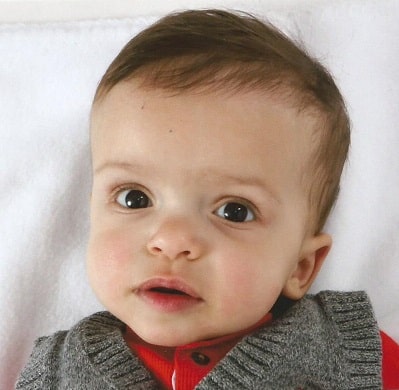All Information regarding Achondroplasia found on Our Little Everything has either been given to us by our own specialists, found through researching other sources online, or is from our own personal experiences. We are in no way professionals or experts in the field. We are sharing our information and experiences with the hope that it may help other families in similar situations. You should always consult with your own doctors and specialists.
Our son, Benjamin, has Achondroplasia.
Achondroplasia is the most common form of dwarfism and occurs in every 1 in 15,000-45,000 births.
80% of people born with achondroplasia are born to average height parents with no family history of the condition, which is the case for us. This is the result of a sporadic chromosomal change during conception. The other 20% inherit the gene from one or both parents.
People with achondroplasia have short stature, usually no taller than 4’10” and disproportionate arms and legs in comparison to the torso. They also have larger heads and some other common characteristics, such as trident hands and a prominent forehead.
Infants tend to have delayed motor skills (in large part due to the head being larger and heavier to hold up). Babies are born with kyphosis (an outward curvature in the spine) that can turn into lordosis (inward curvature of the spine) in adulthood. Other issues that can occur: recurrent ear infections resulting in the need for tubes in the ears, central and/or obstructive sleep apnea, spinal compression, hydrocephalus, obesity, and bowed legs are among some.
Babies need to be handled differently. Their head, neck and back must be moved as a single unit. They need extra back support to help self-correct the kyphosis over time. They can not be placed in carriers, bouncers, swings etc unless the back is hard or can be modified to be more firm. If an apnea is diagnosed they may require oxygen when sleeping and/or tonsils and adenoids removed later on.
People with achondroplasia are of completely normal intelligence and tend to live a normal life span.
[wp_ad_camp_2]
Our geneticist was able to diagnose Benjamin by x-ray and clinical features. He does not recommend MRI’s be done unless the child is exhibiting signs/symptoms of spinal compression, as all babies with achondroplasia have a narrow foramen that the spinal cord passes through. He also has told us “absolutely no physical therapy” is needed. I’m not sure if he believes it causes more hard than good, or if he believes it simply doesn’t help. He is regarded as one of the top doctors in this field so we are following his advice, however, I have seen plenty of other families that are recommended to get routine MRI’s and physical therapy and believe that each family has to do what they feel is best for their child.
Benjamin was diagnosed with partial obstructive sleep apnea in August and had to be on oxygen while sleeping. We return in January for a follow-up sleep study and are hopeful the results will come back normal this time, as he sleeps silently and never seems to have issues with breathing, only slight congestion time to time. His kyphosis is prominent but the geneticist could easily straighten his spine, so we won’t see the orthopedic doctor until May. He shows no signs of hydrocephalus or spinal compression at this time, but we continue to monitor for specific changes that could indicate a change. He currently measures close to the 50 percentile for height/weight/head circumference on the achondroplasia growth charts.
He appears to be a normal happy, healthy baby who just happens to be a little smaller than what you might expect. He is meeting motor development milestones early or around average for achondroplasia. We are very proud of his determination and know he will continue to show us that even though he’s small, he’s mighty.
Other Links You May Be Interested In:
Achondroplasia Growth and Motor Milestones Charts
You can also click on the Achondroplasia category on the right sidebar of the website to see more posts related to Achondroplasia and read updates on Benjamin’s story as it continues.
[wp_ad_camp_3]

